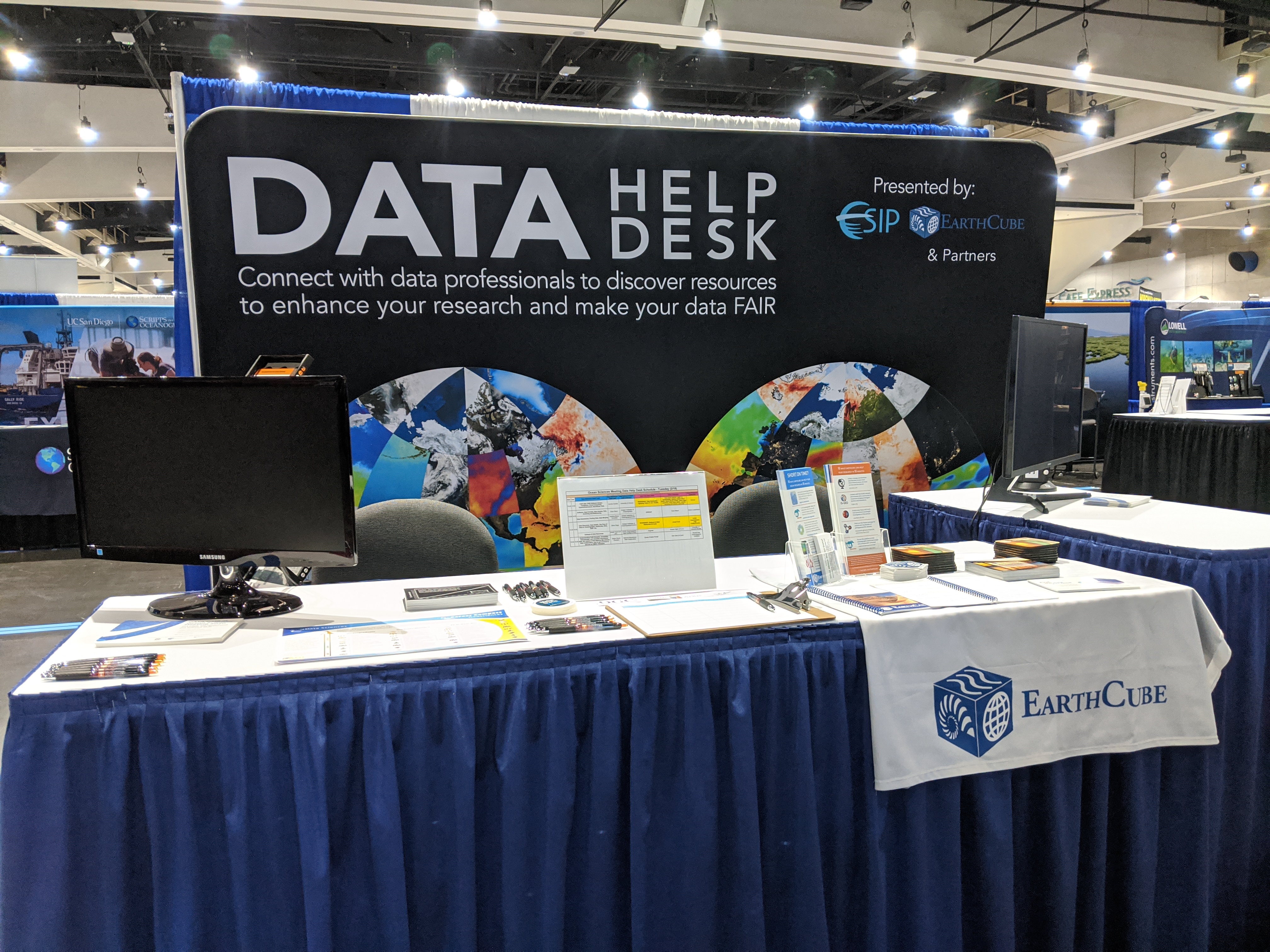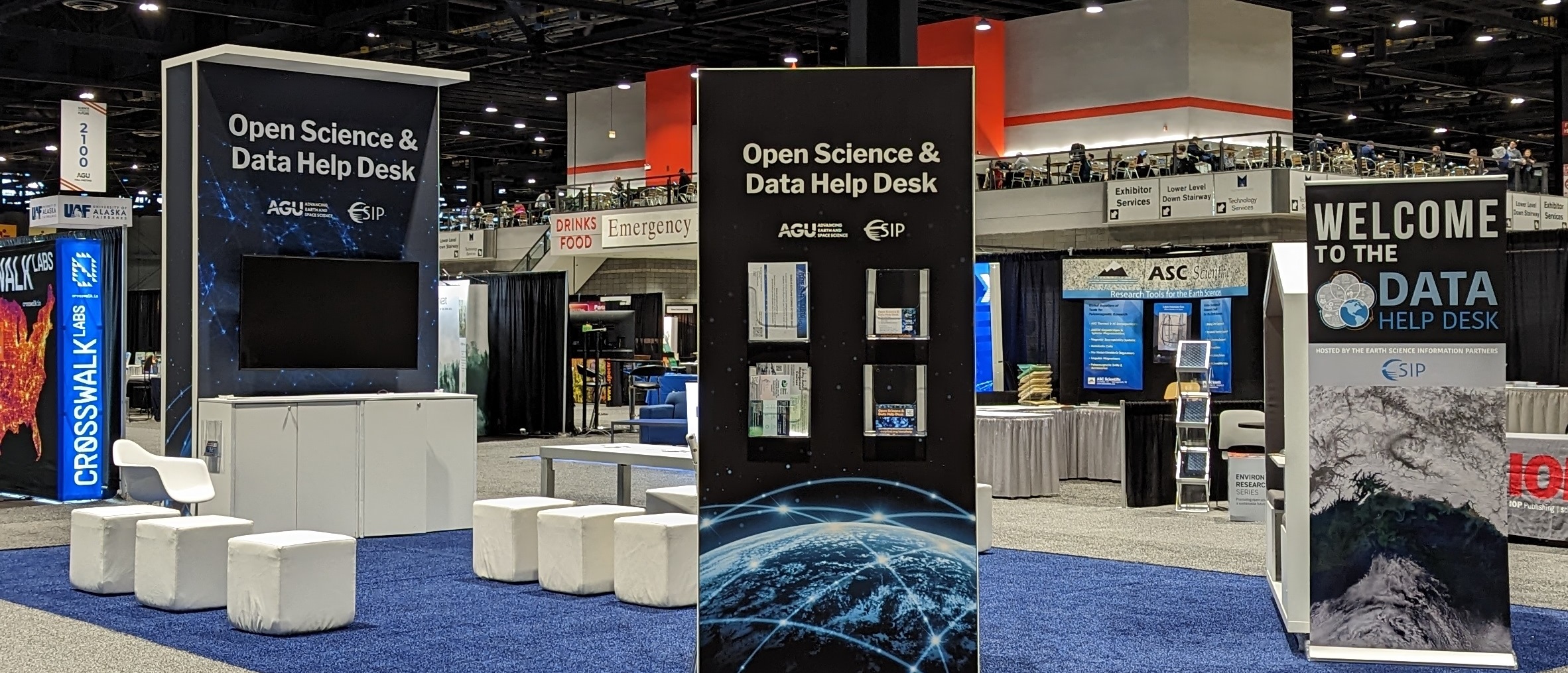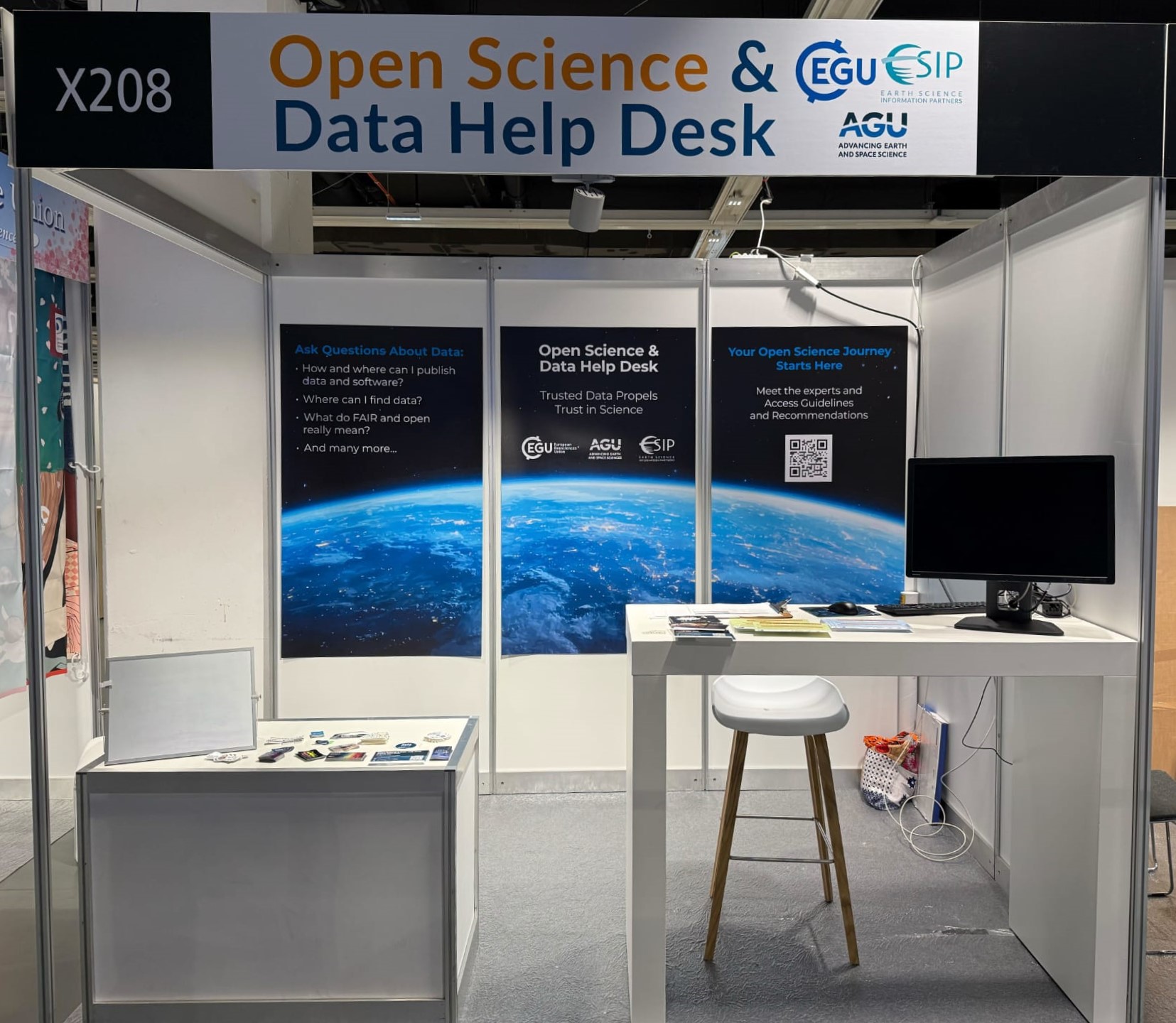Location & Infrastructure
A well-planned physical setup improves the visibility and effectiveness of a Data Help Desk. Whether it’s a single table or a larger open area, the goal is to attract attendees, encourage engagement, and enable volunteers to share resources effectively.
Choosing the Right Space
A visible and accessible location is key. High-traffic areas—like near session rooms, registration, or the exhibit hall—help draw attention without needing extra promotion. The space should be easy to approach without creating a bottleneck in the flow of people moving through the venue. Make sure there’s space to display clear signage that can be seen from a distance, not just at eye level.

A basic table with a couple of chairs behind it is usually enough for quick conversations and handing out materials. Keep the front clear so people can walk up easily. It doesn’t need to be complicated—it just needs to support face-to-face interaction without getting in the way.
Demos and Engagement Areas
If there is room, a larger space near the help desk can support both demos and informal engagement. A demo area typically includes a large monitor and a few chairs, where volunteers can give short walk-throughs of tools or resources. People can walk up, join mid-way, and ask questions as needed. This area can also double as an engagement space where conversations can migrate, folks can talk with community members, or allow volunteers to take a break outside of structured demonstrations.

If a dedicated demo space isn’t possible, that’s fine. Even just having a monitor at the main desk can help — whether it’s used to display rotating content, share links, or support quick, impromptu walkthroughs.
Infrastructure Needs
A successful help desk setup typically includes:
- Table and chairs for volunteers
- Power access, extension cords, and power strips
- Reliable internet connection
- Laptops to access online tools and resources
- A monitor for rotating slides or demo content
- Printed materials and handouts (see Physical Materials)
- Branded signage (See below)
If there is a place to lock things up nearby, such as a cabinet, storage room, or even a lockbox under the table, that can be helpful for securing laptops or personal items between days.
Signage
Clear signage signals what the desk offers and invites attendees to engage. Use banners, tabletop signs, or a rotating slide deck on ths monitor with prompts like:
“What makes data FAIR?”
“Need help publishing your data?”
“Ask us about managing your research data”
A well-designed backdrop can make a big difference in drawing people in. The themed background shown below—a space design—was eye-catching, fun, and sparked curiosity.

Signage can also include QR codes that link directly to guides, tools, or other resources. Including logos and branding for Data Help Desk supporters adds visibility and helps attendees understand who’s behind the effort.
 Data Help Desk Playbook
Data Help Desk Playbook